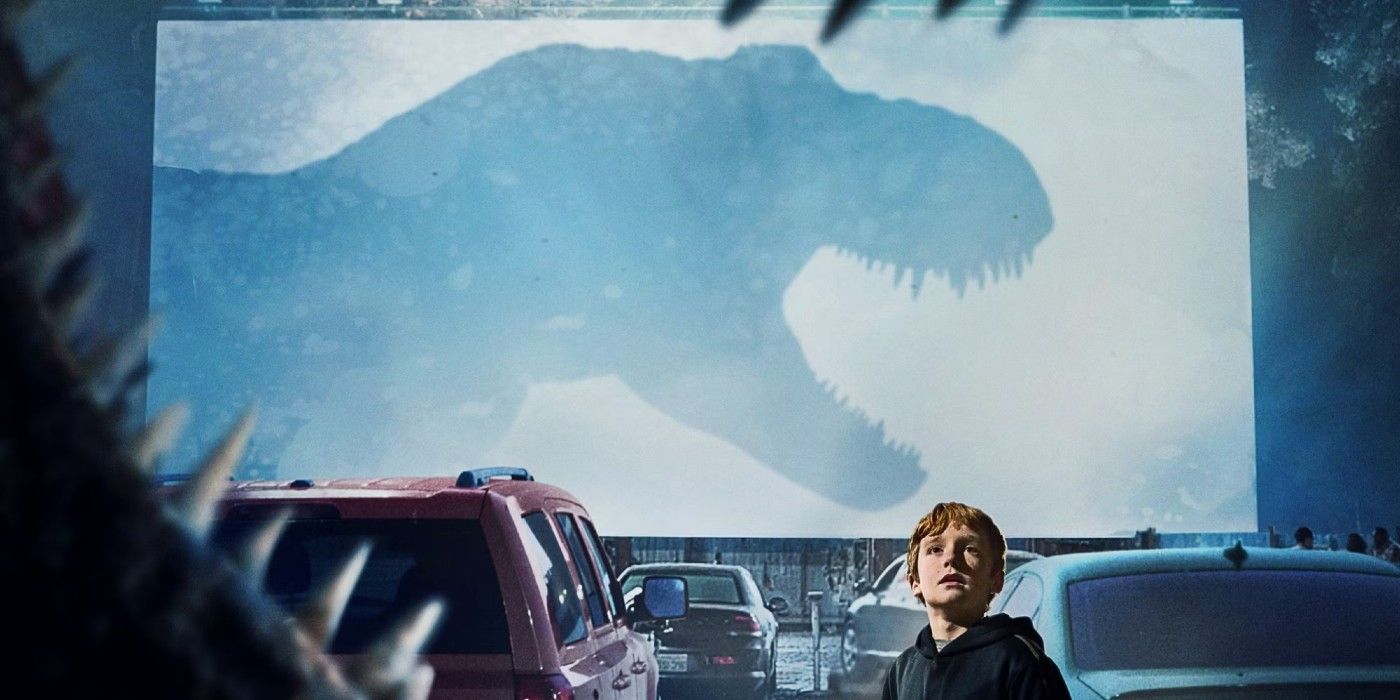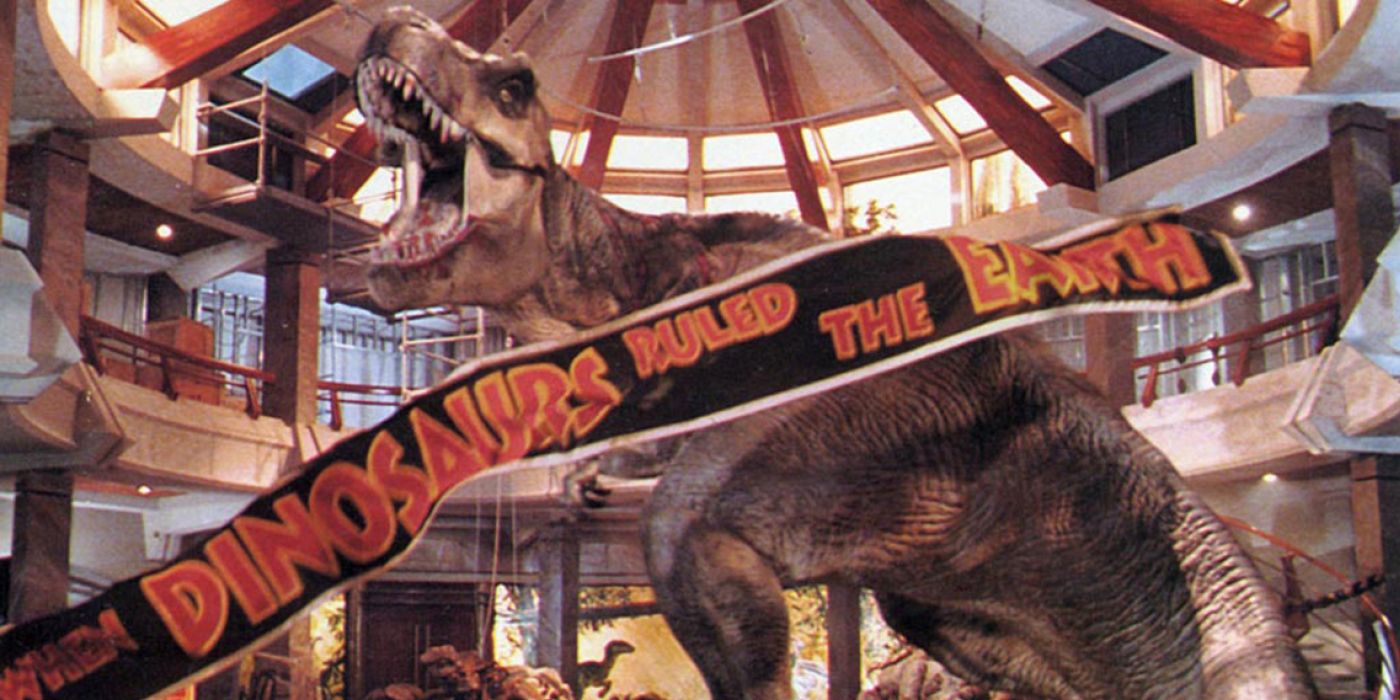Beginning with 1914's Gertie the Dinosaur, extinct animals have always had a special place in cinema, proving the wonders of filmmaking by bringing them back to life on a screen. However, as dinosaurs continue to inspire art, culture and imagination, it's important to remember that these were real animals, especially when considering one of Hollywood's biggest leads, a now-famous Tyrannosaurus Rex that appeared in things like Jurassic Park.
Adapted from the Michael Crichton novel of the same name, 1993's Jurassic Park told the story of a resort that resurrected dinosaurs through fossilized DNA. In addition to the intelligent Velociraptors, the deadly Dilophosaurs and other prehistoric life, Jurassic Park featured a Tyrannosaurus Rex as its main attraction. Sometimes affectionately referred to as "Rexy," Jurassic Park's T-Rex eventually returned as an anti-hero in the Jurassic World trilogy. With her likeness forever immortalized within the Jurassic Park and Jurassic World logos, Rexy still remains one of the most beloved dinosaurs in modern pop culture consciousness.
How a Dino-Star Was Discovered
Recognized as far back as 1874 and formerly known as Manospondylus gigas, T-Rex has been one of the most recognizable dinosaurs in history. Featured in movies such as King Kong, Fantasia and the Jurassic Park series, Tyrannosaurus Rex has stood out as the "King Tyrant Lizard" for over a century. However, Hollywood's T-Rex, which thrilled audiences on screen, was more than just a product of imagination; it had a real-life inspiration. Although unlikely to be signing autographs, even today, countless visitors pass this fossilized celebrity, unknowing that they're more than just a museum display, but the star of almost every major dinosaur movie, including Jurassic Park.
Dubbed "AMNH 5027," this T-Rex is surprisingly an amalgam of two different specimens. Making a big debut at New York's American Museum of Natural History in 1915, the media didn't hesitate to swarm AMNH 5027, calling it "the absolute warlord of the earth" and "the head of animal creation." However, limited by what was possible by museum curation and the evolving understanding of paleontology, AMNH 5027 looked very different than it did in Jurassic Park. The skeleton, with its upright posture and dragging tail, was the only fully mounted T-Rex on display at the time and became a model for countless depictions of the animal. Showing up in films like 1918's The Ghost of Slumber Mountain, 1933's King Kong, and Walt Disney's Fantasia, AMNH 5027 has had an extensive career.
Eventually, despite undergoing a significant scientific overhaul, the most famous fossil at AMNH became the mascot of Jurassic Park. This occurred when artist Chip Kidd used the skeleton to depict one of the T-Rexes on the cover for Crichton's novel, which later became the basis for the movie's iconic logo, distinguished by a loose bone in its skull, giving it the appearance of a pupil. However, even after becoming the face of Jurassic Park, the dinosaur's fame did not. Now well over 65 million years old, the Tyrannosaurus is still featured in movies like the Night at the Museum series, cementing AMNH 5027 as one of Hollywood's oldest stars.
Why T-Rex Is King of the Dinosaurs
It's common knowledge that there are larger and scarier dinosaurs than the Tyrannosaurus Rex. In the past, other theropods such as Jurassic Park III's Spinosaurus, Jurassic World Dominion's Giganotosaurus, and even Disney's Carnotaurus have tried to dethrone T-Rex as the "king of the dinosaurs." However, it still questions why no other dinosaur has reached the fanfare or recognition garnered by AMNH 5027. Like any celebrity, what AMNH 5027's reputation came down to was the media's coverage. When AMNH 5027 made its big breakout in 1915, the press turned the long-dead animal into something mythic. Being called "the prize fighter of antiquity," it's easy to see how the T-Rex became fated to face off against King Kong and Jurassic World's various dinosaurs as the grandest, meanest beast in natural history. Only because of its larger-than-life reputation over a century ago and films like Jurassic Park, the T-Rex continues to be the premier symbol of primeval majesty, no matter who challenges it.
It's fascinating how icons begin, and Hollywood can make something like a dinosaur grow even bigger. However, as extinct creatures come alive again in series like Jurassic Park, audiences should remember that animals like AMNH 5027 were once real. Dinosaurs of all sorts lived, died and left a legacy that continues today. As entertaining as prehistoric animals can be in the fantastic realms of cinema, sometimes the real stories behind them can be just as incredible.



